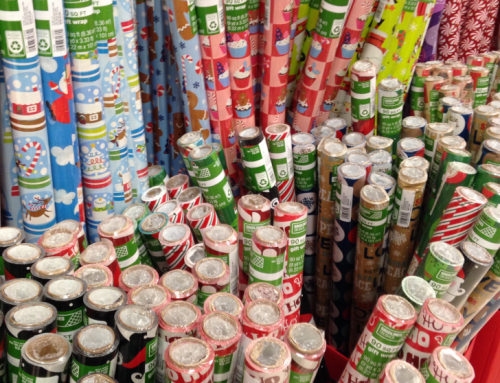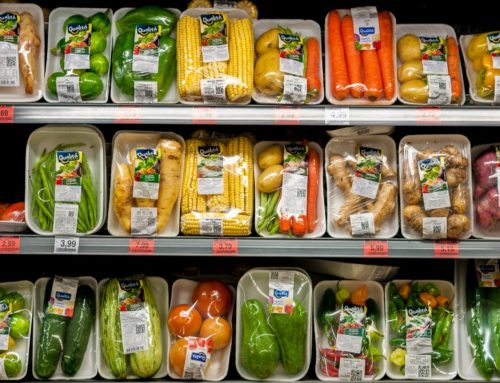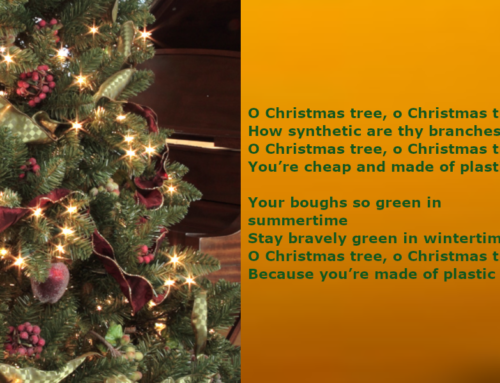With the year that we’ve had, it’s no surprise that many people are looking forward to something that no global pandemic can take away – Christmas. Despite current restrictions, many families will still be able to enjoy the annual traditions such as Christmas dinner, exchanging gifts and falling asleep while watching rubbish on the TV late into the afternoon.
But what about the friends and family you may not have a chance to see? Perhaps you’ll be planning your 39th quiz night of the year on Zoom – but for many, the tried and tested option of sending a Christmas card will be the more palatable option. But, is sending a physical card environmentally damaging, and how does it compare with sending an e-Card?
Between a rock and a card place
The obvious answer to this question is that it’s less environmentally friendly to send a card than to not send one at all, when you take into account the materials used (paper, glue and dye – and perhaps foil and glitter) and the impact of shipping it to a friend or relative. However, in a year where our ability to connect with others has been severely limited and many have felt more isolated than ever, how significant is the environmental impact when weighed against the wellbeing benefit?
Well, according to the British public, many are putting more effort into sending cards this year. In a recent poll, 10% of those surveyed told YouGov that they’d be sending more Christmas cards this year, meaning that there’s likely to be at least an additional 5.2 million cards sent this festive period, adding to the 1 billion cards being sold in the UK alone each year. Furthermore, over 55% of people stated that Christmas greetings were more important than ever in 2020, showing that many hold the belief that a little Christmas cheer can go a long way.
Fallen on card times
The most obvious environmental factor when analysing an object’s impact is the material that it’s made from, which in this case is primarily light card. Some will also contain foil and glitter, or even the mechanism for a singing or flashing card. If you focus on light card as the primary material, the average greetings card weighs around 30 grams, meaning that around 31,500 tonnes of Christmas cards are sold in the UK each year. In terms of trees, it takes around 17 trees to create 1 metric tonne of pulp which in turn means that over half a million trees (535,500) will have been cut down to create the cards sent this holiday season.
Estimating how much carbon this would create through cutting down the trees is tricky business. However, a good estimate is around half a tonne of CO2 per tree in its 25-year lifetime, meaning that nearly 250,000 tonnes of CO2 embedded in the trees now resides within our cards (with some CO2 also escaping into the atmosphere during the process). Furthermore, researchers at Exeter University have estimated that sending a card equates to about 140g of CO2 equivalent (CO2e), which is the equivalent to making yourself around 2 cups of tea.
This huge amount of pulp needed to create Christmas cards for the UK alone shows why recycling or reusing cards wherever possible is essential. In 2014, it was estimated that the UK achieved a recycling rate of around 73% for recycling paper and card, which definitely isn’t terrible. However, when you consider that the other 27% of Christmas cards (270 million) are binned, burned or placed in a dark drawer never to be seen again, there’s still a lot more that we can do to ensure that all of our Christmases are green.
In addition to the light card mentioned above, some cards use other materials such as glitter, foil or a mechanism to make them sing or flash. Whilst these things can make your cards shiny and eye-catching, the use of these materials make such cards extremely difficult to recycle, which essentially makes them destined for disposal. So you should steer clear if you’re looking to reduce the impact of your card sending from now on. Additionally, if you recycle or dispose of a card that contains electronics without separating the electrical bits out, it could pose a fire risk at waste sites, due to the combustible nature of batteries, especially around materials such as paper and card.
House of e-Cards
So after all this environmental doom and gloom, what alternatives are there to sending a physical card this Christmas? Other than the obvious ‘don’t send a card’, e-Cards can provide an excellent alternative to send to our more tech-savvy relatives, allowing them to view and enjoy the card forever via their computer or smartphone. However, many of the most vulnerable this year are elderly people, who often don’t have access to a computer or smartphone, or may not be comfortable with using them for anything other than basic browsing and texting. This could potentially lead to the ‘digital exclusion’ of some of those in the greatest need of Christmas cheer.
Furthermore, neither computers nor smart devices are without environmental impacts. Both contain considerable amounts of plastic and common metals for the housing and wiring, as well as rare metals for internal components, all of which have considerable environmental impacts of their own.
Finally, smart devices and computers also use a reasonable amount of electricity: for example, the laptop on which I’m writing this blog post uses around 100 watts, meaning that on an average day it consumes almost 1 kWh of electricity. Whilst this is fairly low (heating a litre of water in a 2.5kW kettle, for example, uses around the same amount of energy as running my laptop for an hour), sending an e-Card means making use of servers around the world. Mike Berners-Lee estimated in 2010 that a typical email generates around 4g of CO2e, while one with a large attachment can have a carbon footprint of 50g CO2e. The figures may have come down in the decade since, as the carbon intensity of electricity generation falls; but at worst, it is barely a third of the carbon footprint of a physical card.
Merry Cardmas
In 2020, with the year we’ve had, it’s more important than ever to stay connected in any way that we can, especially during the festive period. If you are sending a Christmas card this year, remember these three simple rules:
- Send an e-Card where possible, to save at least two thirds of the emissions (and more if you avoid sending overly-large picture attachments);
- Keep the cards you do send simple (avoid glitter, foil and singing/flashing cards); and
- Reuse – or failing that, recycle – your old cards (bearing in mind that glitter or foil-covered cards are unlikely to be recyclable).
Whilst sending a card (whether that be physical or an e-Card) may have an environmental impact, it’s important to recognise that the overall impact on the environment is minor. Posting 50 cards would generate less than 8kg of CO2e impact, less than 0.2% of the average annual carbon footprint per capita in the UK of 5.3 tonnes. Weighed against that is the benefit that a small act of kindness can bring to the wellbeing of those around us, with something as simple as a piece of card helping to ward off a little of the isolation and loneliness many have felt in this most difficult of years.
Featured image: Open Grid Scheduler (CC0 1.0) via Flickr







As well as urging people to recycle the cards they receive, shouldn’t we be trying to buy cards made of recycled card? Sadly, it seems to be hard to find those these days.